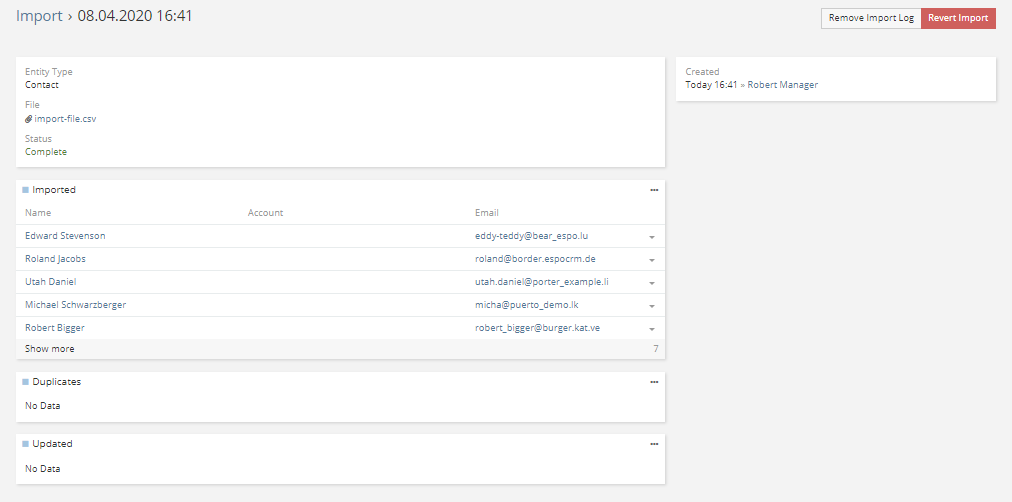This article is aimed at ensuring quick and smooth customer data migration from Hubspot. We hope that it will be useful and make exporting of your customer information efficient and fast.
Exporting contact data from Hubspot CRM
To start extracting the contact data from Hubspot CRM, go to Contacts module. If your aim is to export only specific type of contacts (e.g. contacts created last week or those that opted-out during the last email campaign), you should segment them either by using the existing view (click All views and choose the needed one) or create the new one by clicking Add view. However, if you want to export All Contacts from your CRM account, click All views > All contacts > Options dropdown menu and select Export.
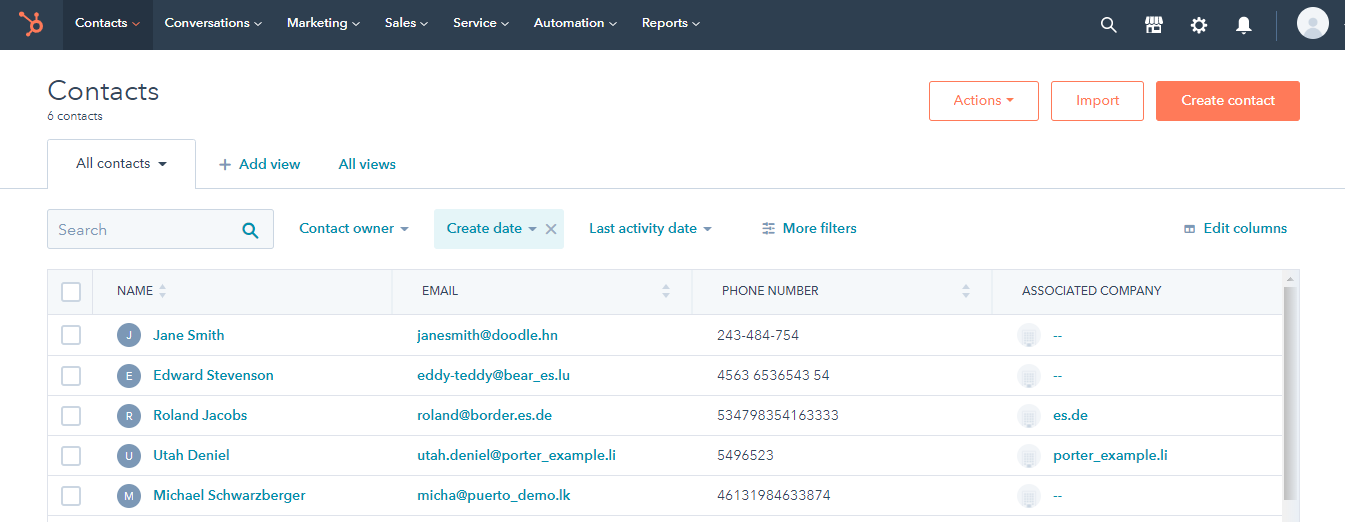
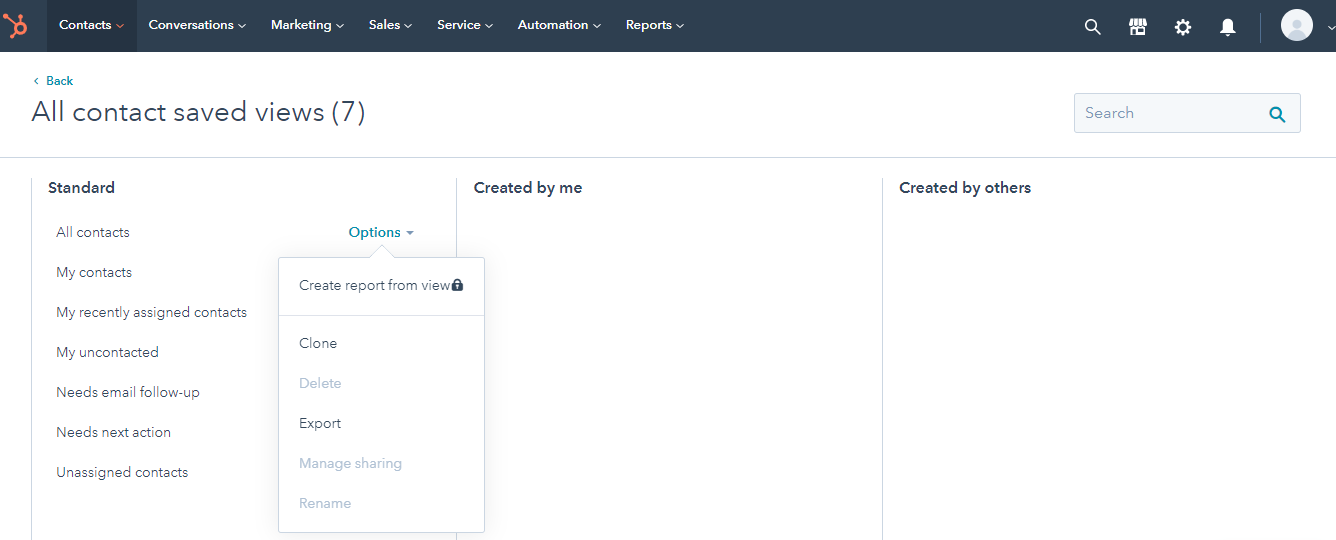
In the next window, select a .CSV file format from the drop-down menu. After that, choose whether to include only current columns or all properties into the export file. Make sure that everything is correct and click Export.
To find more information on the topic, follow the link:
https://knowledge.hubspot.com/crm-setup/export-contacts-companies-deals-or-tickets
All trademarks belong to their respective owners.
Importing data into EspoCRM
As soon as you have the export file with customer data, you can start importing it into your EspoCRM instance. The system allows you to import information in CSV file format.
In order to migrate data, at first navigate to Administration and click Import in Data section. The import process happens in three steps. Let’s dive in and take a closer look at each step.
Step 1
The first thing to do here is to determine the type of records that are going to be imported. In this case, select Contacts from the Entity Type list. Then, click Choose File and upload the CSV file you’ve exported from your previous CRM system. The next stage is to decide what should be done with the imported records. In What to do? section, there are 3 options “Create Only”, “Create & Update”, “Update Only” that allow both to create new records and update the information in the existing ones if you used CRM systems simultaneously.

Once you’ve finished with the previous configurations, you can proceed to define the import properties. Select the correct field delimiter, text qualifier, and format for person name, date, time, timezone and currency. If you’re importing a large amount of data, it’s better to tick off Execute in idle. You can also Skip searching for duplicates to make the execution of import faster if you’re sure that there’re no duplicated contacts. The Silent mode option allows to skip most of after-save scripts and workflows, which also increases the speed of import. In the Preview panel, you will be able to see how the data will be parsed. When you change properties, the preview is updated. If everything is correct, click Next and proceed to Step 2.
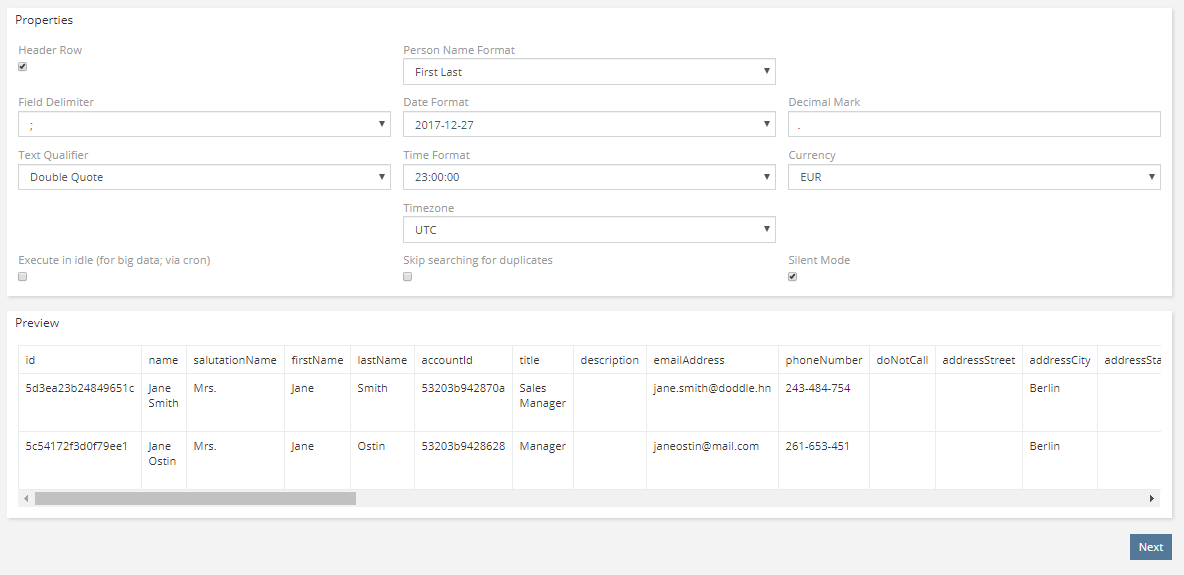
Step 2
Field Mapping panel shows how fields correspond to columns of the CSV file. You can skip importing not needed columns here by choosing the Skip option from the list. If you chose not only to create but also to update records, you will need to tick off fields by which the system will match the records that should be updated. In the Default Values section, you can add fields to the imported records, which is useful, for example, if you want to assign them to a particular user or team. Once everything is configured here, click Run Import and proceed to Step 3.
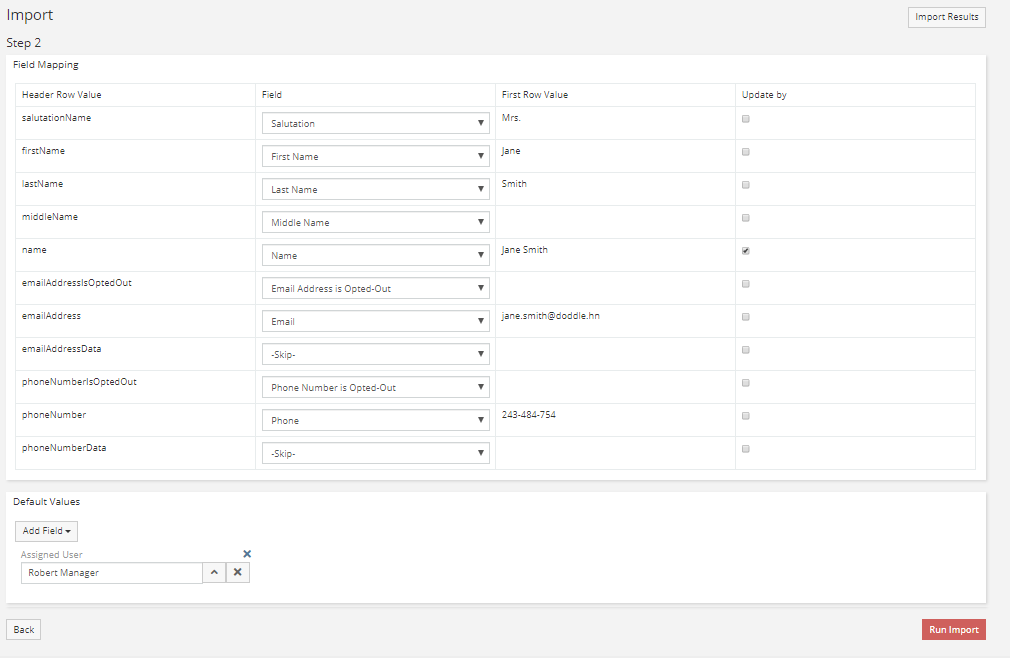
Step 3
At this point, you can see the list of imported, updated and duplicated records. Now you can check if the imported data is correct and Remove Import Log to prevent an accidental reverting of the import. If there are some issues with fields in the imported records, you can Revert import and try again.
